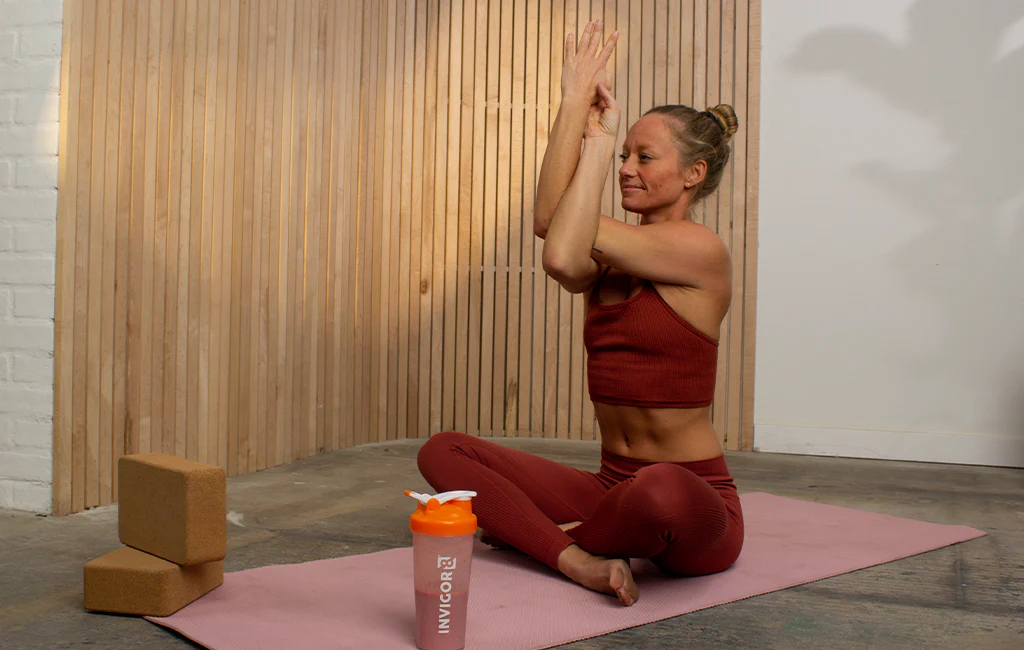Getting out of bed for a morning workout can feel nearly impossible, especially when your alarm buzzes at 5 AM and your warm bed seems infinitely more appealing. I’ve been there. For years, my snooze button was my best friend. However, building a consistent morning exercise routine is one of the most effective ways to improve your fitness, boost your energy, and guarantee your workout actually happens. The key isn’t just willpower—it’s about having the right strategies that make it easier. If you’re looking for general advice on how to get motivation to work out, this is a great place to start, specifically for those early hours.
Why Morning Workouts Are Worth the Effort
Before we dive into the “how,” let’s talk about the “why.” Understanding the real benefits makes it much easier to peel back the covers. It’s not just about ticking a box; it’s about transforming your day.

Physical and Mental Health Benefits
Starting your day with movement kickstarts your metabolism, an effect that can last for hours. Some research suggests that exercising in a fasted state, as many people do in the morning, may also improve fat oxidation.
But the benefits go far beyond the physical. Morning exercise is a powerful mood booster. It triggers the release of endorphins, those feel-good chemicals that reduce stress and create a sense of well-being. It’s a natural way to find that feeling of how working out improves mood. This mental clarity and focus carry over into your workday, helping you feel sharper and more productive long before you’ve had your second coffee.
Higher Consistency and Long-Term Success
The single biggest advantage of a morning workout is that you get it done before the day has a chance to sabotage your plans. Late meetings, unexpected errands, or simple after-work fatigue are the most common reasons people skip exercise. By working out first, you eliminate those excuses.
Research backs this up. People who exercise in the morning tend to have stronger habit formation and higher consistency rates. You make one decision—to wake up and work out—instead of negotiating with yourself all day.
Optimize Your Sleep Schedule First
Here’s the honest truth: your morning motivation is born the night before. You can’t expect to leap out of bed at 5:30 AM if you went to sleep after midnight. Insufficient sleep is the number one enemy of a morning workout routine.
Aim for 7-9 hours of quality sleep. To make this happen, work backward. If you need to be up at 6 AM for your workout, you should be asleep by 11 PM at the latest. Sticking to a consistent sleep and wake time, even on weekends, helps regulate your body’s internal clock, or circadian rhythm, making it much easier to wake up naturally.

Create an Evening Wind-Down Routine
You can’t just flip a switch and fall asleep. An hour before bed, start signaling to your body that it’s time to rest.
- No Caffeine After 2 PM: Its effects can linger for hours.
- Limit Screen Time: The blue light from phones and laptops disrupts melatonin production. Put devices away 30-60 minutes before bed.
- Keep it Cool: A bedroom temperature between 65-68°F (18-20°C) is ideal for sleep.
- Relax: Try some light stretching, deep breathing exercises, or reading a physical book. A consistent routine becomes a powerful cue for sleep.
Set Yourself Up for Success Before Bed
The less you have to think in the morning, the better. Eliminate friction by preparing everything you need the night before.
- Lay out your entire workout outfit. I mean everything: clothes, socks, shoes, and even your headphones.
- Pack your gym bag.
- Prep your pre-workout snack or coffee. Set the timer on your coffee maker.
- Decide on your workout. Knowing exactly what you’re going to do removes morning decision fatigue.
Build a Morning Environment That Energizes You
Your environment can either pull you back into bed or push you toward your goals. Make a few simple tweaks to create a space that encourages wakefulness.
- Move your alarm clock across the room. This forces you to physically get out of bed to turn it off. Once you’re up, you’ve won half the battle.
- Automate your lights. Use a smart plug or a timer to have your lights turn on gradually before your alarm goes off.
- Create a killer playlist. Put on some upbeat music as soon as your feet hit the floor.
Use Light and Sound to Your Advantage
Light is one of the most powerful signals for your brain to wake up. As soon as you’re up, open the curtains to let in natural sunlight. If it’s still dark, turn on bright lights in your bathroom and kitchen. This helps to suppress melatonin and boost alertness. An energizing podcast or your favorite music can provide an instant mental lift and shift your state from sleepy to ready.
Start Small and Build Gradually
So many people fail because they go from zero to one hundred. They try to start with an intense, hour-long workout and burn out within a week. For the first few weeks, your only goal is to show up.
Start with just 10-15 minutes of light movement. A brisk walk, some gentle yoga, or a few bodyweight exercises. The win isn’t the workout itself; it’s the act of getting up and doing something. This builds the foundation of the habit. Once consistency feels easy, you can gradually increase the duration and intensity. This is the secret to learning how to stick to a workout routine for the long haul.
Choose Workouts You Actually Enjoy
Motivation is finite, but enjoyment is sustainable. If you dread your workout, you’ll never stick with it. Don’t force yourself to run if you hate running. Explore different types of movement until you find something you genuinely look forward to.
Maybe it’s a dance workout on YouTube, a bike ride through your neighborhood, a morning yoga flow, or lifting weights. Having a few options you love prevents boredom and keeps you engaged.
Create Accountability Systems
Sometimes, internal motivation isn’t enough. That’s where external accountability comes in. It’s much harder to skip a workout when you know someone else is counting on you.
- Find a workout buddy: Plan to meet a friend at the gym or for a run.
- Schedule with a trainer: The financial investment is a powerful motivator.
- Join a morning fitness class: Booking in advance creates a commitment.
- Use an app: Fitness apps with streak-tracking features can be surprisingly effective.

Track Your Progress and Celebrate Wins
Motivation thrives on momentum. Seeing how far you’ve come is a powerful reminder of why you started. Track your consistency on a calendar, use a fitness journal to note how you feel after each workout, or log your strength gains.
And don’t forget to celebrate the small wins! Did you get up every day for a week? Treat yourself to a new piece of workout gear or a nice coffee. This positive reinforcement wires your brain to associate the new habit with a reward.
Fuel Your Body Appropriately
The fasted vs. fed workout debate is ongoing, but the simple answer is to do what feels best for you. However, many people find that a small, easily digestible snack provides the energy needed to perform well and feel good.
Think a banana with a spoonful of almond butter, a small cup of Greek yogurt, or a piece of toast. Most importantly, hydrate. Drink a large glass of water as soon as you wake up. This rehydrates you after a night’s sleep and helps you feel more awake and ready to move.
Reframe Your Mindset Around Morning Exercise
The words you use matter. Shift your internal dialogue from “I have to work out” to “I get to work out.” See it as an act of self-care, a gift of time you are giving yourself, rather than a punishment.
Adopt an identity-based approach. Instead of thinking of yourself as “someone trying to work out in the morning,” start seeing yourself as “a person who works out in the morning.” This subtle shift makes the behavior feel like a natural part of who you are.
Handle the Motivation Dips
Motivation is not a constant; it ebbs and flows. There will be mornings when you just don’t feel like it. That’s normal. The key is to have a plan for those days. If you’ve ever felt you completely lost motivation to work out, these micro-strategies can help you get back on track.
- The 5-Minute Rule: Commit to just five minutes. If you still want to stop after five minutes, you can. Most of the time, you’ll keep going.
- Remember the Feeling: Remind yourself how great you feel after a workout. You’ve never regretted a finished workout.
- Have a Backup Plan: Have an easier, shorter workout option ready for low-energy days. Consistency trumps intensity every time.
And All the Other Tips…
The sections above are the core strategies, but let’s not forget other crucial pieces of the puzzle that make up your complete plan.
Design Your Ideal Morning Workout Routine
You don’t need an hour. A consistent 20-30 minutes is incredibly effective. A simple, time-efficient structure could look like this:
- 5-Minute Warm-up: Dynamic stretches like leg swings and arm circles, plus some light cardio like jogging in place.
- 15-20 Minute Main Workout: A strength circuit, a HIIT routine, or some steady cardio.
- 5-Minute Cool-down: Static stretching to improve flexibility.

Troubleshoot Common Morning Workout Challenges
- “I’m too tired.” This is almost always a sleep issue. Go to bed 30 minutes earlier.
- “It’s too cold.” Lay your clothes somewhere warm. Have a hot cup of tea or coffee waiting. Or, find a great routine you can do indoors. There are plenty of ways for how to motivate yourself to exercise at home on those chilly mornings.
- “I don’t have time.” A 15-minute HIIT workout can be more effective than 45 minutes of slow cardio. Every minute counts.
The First Two Weeks: Your Critical Window
Be prepared: the first two weeks are the hardest. Your body is adjusting to a new schedule, and the habit isn’t yet automatic. Give yourself extra grace during this period. Go to bed earlier, choose easier workouts, and lean heavily on your accountability systems. After about 14 days, you’ll notice it starts to feel significantly easier.
Long-Term Success: Making It Stick
Once the habit is formed, the goal is to maintain it. Keep it fresh by periodically trying new workouts. Have backup plans for when you travel or your schedule gets disrupted. And most importantly, regularly reconnect with your “why.” Remind yourself how much better you feel, both mentally and physically, when you start your day with movement.
Eventually, it stops being a decision and starts being part of who you are.
At www.notonetype.org, we believe that building healthy habits is a personal journey, not a one-size-fits-all formula. Find what works for you, be patient with yourself, and enjoy the process.


You may also like this
How Working Out Improves Your Mood?
Some days, just getting out of bed feels like a win. On those days, the...
Nov
How to Motivate Yourself to Workout Alone: 15 Proven Strategies That Work
Let’s be honest: mustering the energy to work out is tough enough. But doing it...
Nov
How to Motivate Yourself to Workout When Depressed (12 Tips)
Depression often creates a frustrating cycle: exercise can significantly improve mood, yet the condition itself...
Nov
Lost Motivation to Work Out? 8 Reasons Why & How to Recover
Losing motivation to work out is a common experience that affects even the most dedicated...
Nov
How to Get Motivation to Work Out: 17 Strategies That Work
Lack of motivation to work out is a universal challenge. It doesn’t matter if you’re...
Nov
How to Stick to a Workout Routine: 15 Proven Strategies for Long-Term Success
Sticking to a workout routine is one of the most common challenges in fitness. The...
Nov